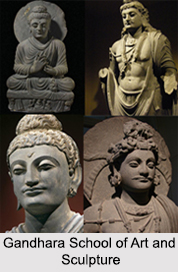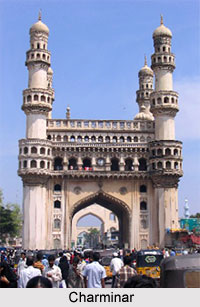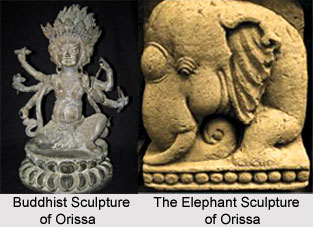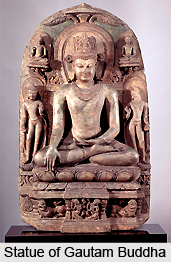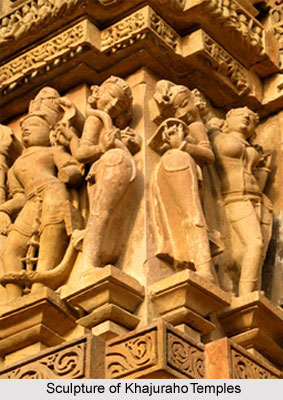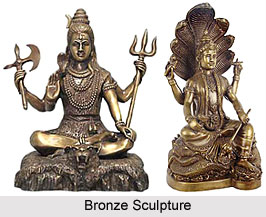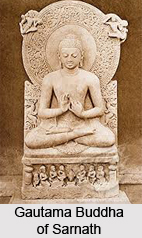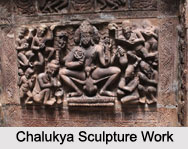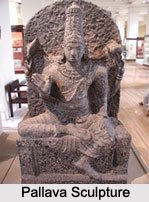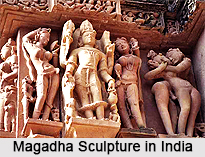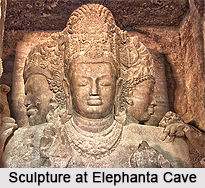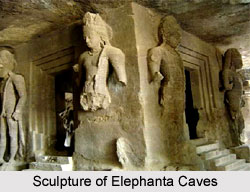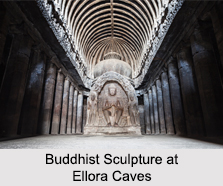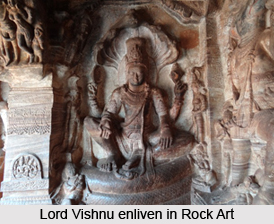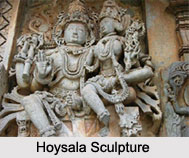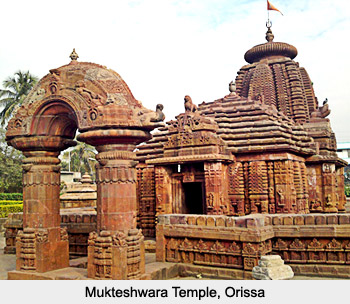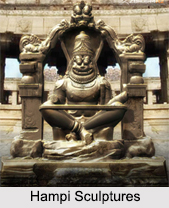 Vijayanagara Sculptures combined the Chalukya, Chola, Pandya and Hoysala architectural modes. Soapstone was used for sculpture as it is soft and could be easily carved. The kingdom built temples, monuments, palaces and other structures across South India, with a principal focus in its capital. The monuments of Hampi and Vijayanagara are listed as a UNESCO World Heritage Site. During the Vijayanagara period the local hard granite was preferred in the Badami Chalukya style. The use of granite reduced the density of sculptured works. As granite is prone to flaking, few pieces of individual sculptures reached the high levels of quality seen in previous centuries. In order to cover the unevenness of the stone employed in sculptures, artists employed plaster to give the rough surface a smooth finish painted it thereafter with colours.
Vijayanagara Sculptures combined the Chalukya, Chola, Pandya and Hoysala architectural modes. Soapstone was used for sculpture as it is soft and could be easily carved. The kingdom built temples, monuments, palaces and other structures across South India, with a principal focus in its capital. The monuments of Hampi and Vijayanagara are listed as a UNESCO World Heritage Site. During the Vijayanagara period the local hard granite was preferred in the Badami Chalukya style. The use of granite reduced the density of sculptured works. As granite is prone to flaking, few pieces of individual sculptures reached the high levels of quality seen in previous centuries. In order to cover the unevenness of the stone employed in sculptures, artists employed plaster to give the rough surface a smooth finish painted it thereafter with colours.
Feature of Vijayanagara Architecture
The rulers of Vijayanagara were the successors of the rich traditions in art and architecture of the Cholas, the Pandyas and the Hoysala. The architecture of this period is generally perceived as a continued and developed form of the Dravida style. The rulers of this reign were interested in renovating and enlarging a lot of falling down temples of the past. The Hemakuta temple at Hampi and the Vishnupada at Viziyanagaram in Andhra Pradesh along with Lakshmi temple at Melukote and the Belur Chennakeshava temple illustrate this point.
Some of the salient features of the Vijayanagara style of architecture are as follows:
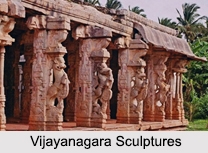
•Vijayanagara temples have gopurams that are adorned with large life sized figures of men, woman, Gods and Goddesses. This style became popular during the rule of king Krishnadevaraya and is seen in South Indian temples constructed over the next 200 years. The compound reflected concentric series of rectangular area walls with towers in the middle of each wall. Occasionally the main temple at the centre is surrounded by a number of smaller temples.
•Another notable feature of this period was the construction of a number of mandapas in the premises of a temple. Such mandapas are found in the temples of Tirupati.
•Attractive wall paintings are found horizontally on the platform mouldings, caves and the pillars in the centre of a temple. They emerge vertically on compound pillars. These wall paintings are also found on the walls and doorways.
•The forts at Anegondi, Ikkeri, Penugonda, Chitradurga, Bhatkala and Chandragiri give appropriate examples for the military architecture of this period.
Temple Architecture of Vijayanagara
In temple building, the Vijayanagara continued the traditions and styles of the Chalukyas, Cholas and Pandyas. Sculpture was integrally linked with architecture in the creation of Vijayanagara temples. Large life-size figures of men, women, gods, and goddesses decorate the gopuram of many Vijayanagara temples. Some of them are as follows:
Harasa Rama Temple: One of the marvellous temples of Vijayanagara time is the famed Harasa Rama Temple at Vijayanagara built in the reign of Krishna Deva Raya. The temple does not have a gopuram. The four middle pillars are finely polished and decorated with stunning sculptures, panels of the whole life of Rama and episodes from the Ramayana are delicately sculptured on the external side of the temple.
Temple of Vithala: The temple of Vithala also in Vijayanagara dedicated to Vishnu is one more huge structure. It has axial mandapas and small shrines and gopurams. It has an extremely ornamented key mandapa with complicated picture compositions painted on the ceiling. This shows that the art of sculpture and painting had attained a very high degree of brilliance during that period. The classic high gopuram is covered with excellent sculptures.
Temples at Tadipatri: The temples at Tadipatri were built by local chieftains of the Vijayanagara Empire.




